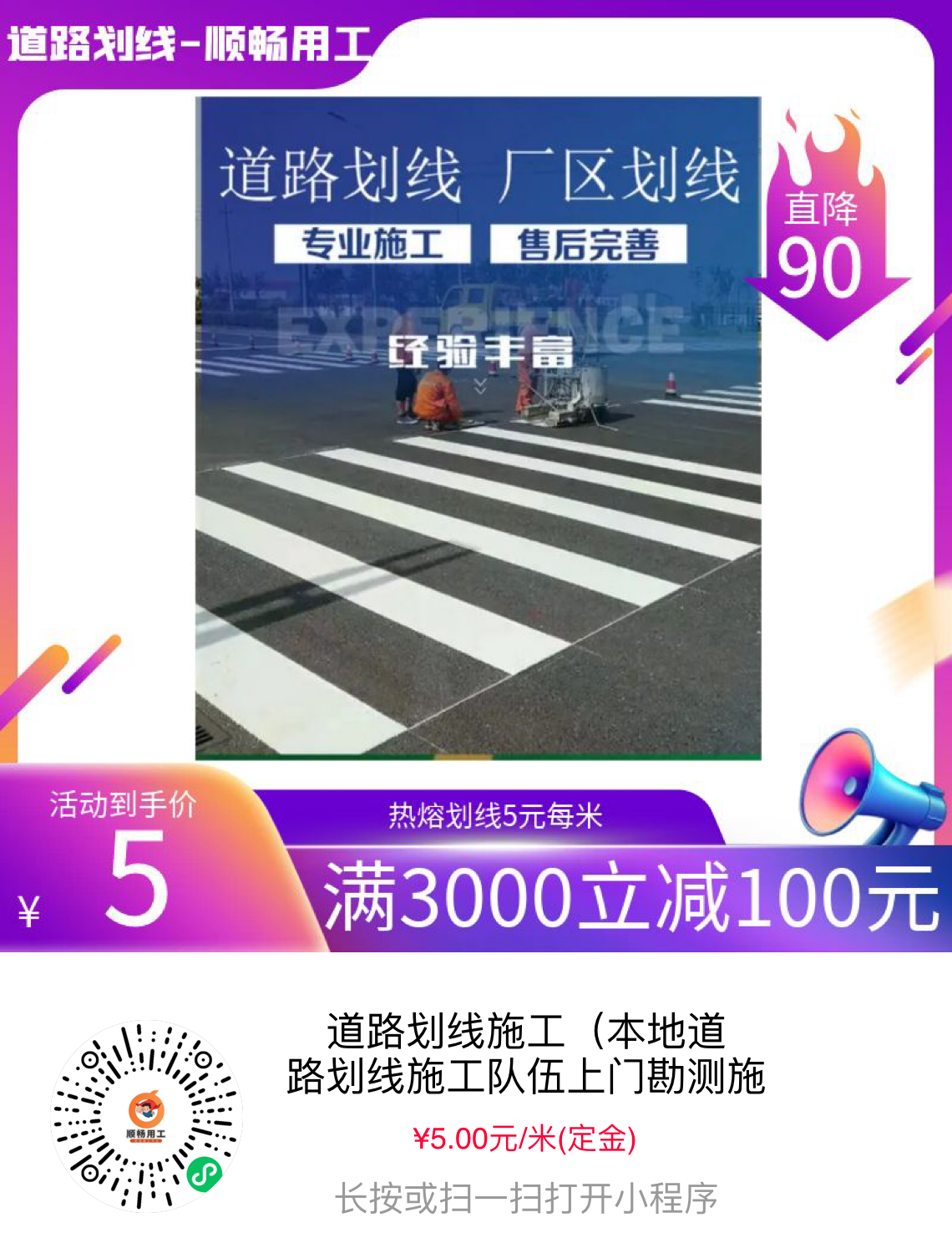
Title: Understanding the Importance of Pedestrian Crosswalk Lines: A Comprehensive Guide
Introduction:
In our modern society, pedestrian safety is of utmost importance. Pedestrian crosswalk lines play a vital role in ensuring the safety and convenience of pedestrians. In this article, we delve ing into the significance of these lines, their various types, and their impact on road safety.
I. The importance of pedestrian crosswalk lines:
1. Enhancing Pedestrian Safety: Pedestrian crosswalk lines provide a designated area for pedestrians to safely cross roads, minimizing the risk of accidents and collisions with vehicles.
2. Promoting Traffic Order: These lines help regulate traffic flow by indicating where pedestrians should cross and where vehicles should yield. This establishes a clear hierarchy, ensuring smooth and organized movement.
II. Different types of pedestrian crosswalk lines:
1. Zebra Crossings: Zebra crossings, characterized by their alternating black and white stripes, are the most common type of crosswalk lines. They are easily recognizable and provide a clear visual cue for drivers to yield to pedestrians.
2. in Pelican Crossings: Pelican crossings incorporate traffic signals and pedestrian push buttons, providing pedestrians with a controlled opportunity to cross busy roads.
3. Toucan Crossings: Toucan crossings are designed to accommodate both pedestrians and cyclists, allowing them to cross simultaneously. These crossings enhance safety by promoting the sharing of road space.
4. Puffin Crossings: Puffin crossings are equipped with sensors that detect when pedestrians are still crossing and adjust the timing of traffic lights accordingly. This ensures pedestrians have enough time to cross safely.
III. The the role of pedestrian crosswalk lines in road safety:
1. Encouraging Compliance: The presence of pedestrian crosswalk lines encourages both drivers and pedestrians to follow traffic rules and regulations, fostering a culture of road safety.
2. Increasing Visibility: Brightly painted crosswalk lines enhance visibility, especially during low-light conditions or bad weather. This helps drivers notice the presence and of pedestrians and reduces the likelihood of accidents.
3. Educating Pedestrians: Crosswalk lines serve as a visual reminder for pedestrians to use designated crossing areas and make them more aware of potential dangers when crossing elsewhere.
IV. Measures to ensure the effectiveness of pedestrian crosswalk lines:
1. Regular Maintenance: Regularly repainting and maintaining pedestrian crosswalk lines ensures their visibility and effectiveness, thereby minimizing risks for both pedestrians and drivers.
2. Community Education: Educational campaigns and awareness programs can help educate the public about the importance of pedestrian crosswalk lines and the potential consequences of disregarding them.
3. Enforcement: Strict enforcement of traffic laws pertaining to pedestrian crosswalk lines, such as is penalizing drivers who fail to yield to pedestrians, is vital for ensuring their effectiveness.
Conclusion:
Pedestrian crosswalk lines are an essential aspect of road safety, providing designated areas for pedestrians to cross roads safely. By understanding their importance, promoting their visibility, and ensuring their effectiveness, we can create a safer and more pedestrian-friendly environment for everyone. Let's prioritize pedestrian safety and strive for a world where these lines are universally respected.











